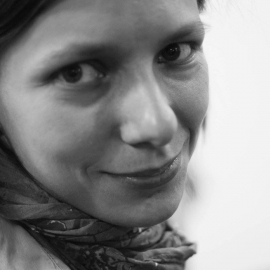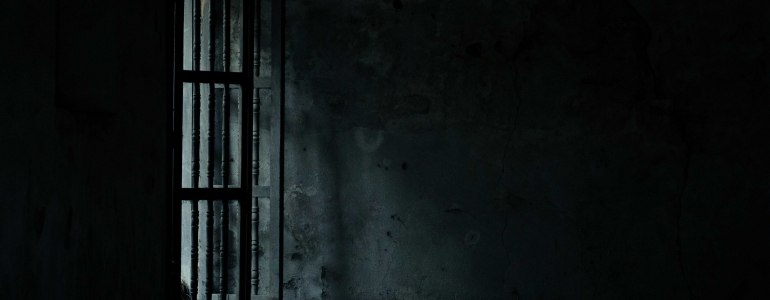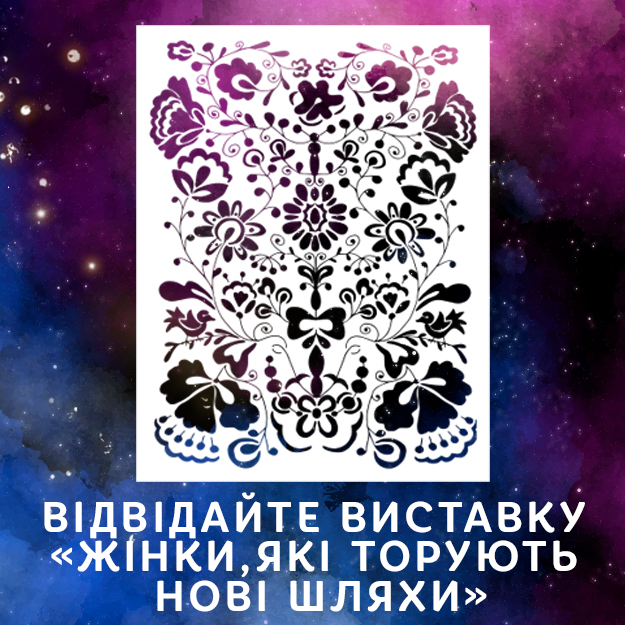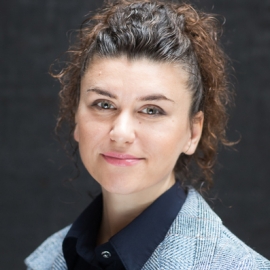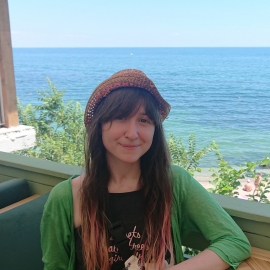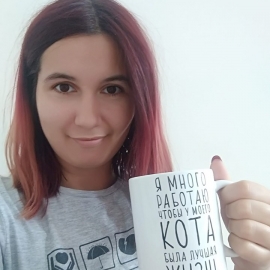Translated from Ukrainian by Galyna Kotliuk.
POSTCOLONIAL CONTEXT OF THE 20th CENTURY
Western humanities and social science have provided us with an extensive body of knowledge we are gladly utilizing, especially in the field of gender studies. However, as argued by Madina Tlostanova, a researcher of feminism and colonialism, in her work Decolonial Gender Epistemologies, an uncritical approach to Western methodologies and disciplines threatens objectification of a desire to analyze the world from a certain position, which is actually imaginary, objective, and a zero-reference point. [2] In Culture and Imperialism, Edward Said states explicitly, “... many of the classes and individuals collaborating with imperialism began by trying to emulate modern European ways, to modernize according to what was perceived of as European advancement.” [3]
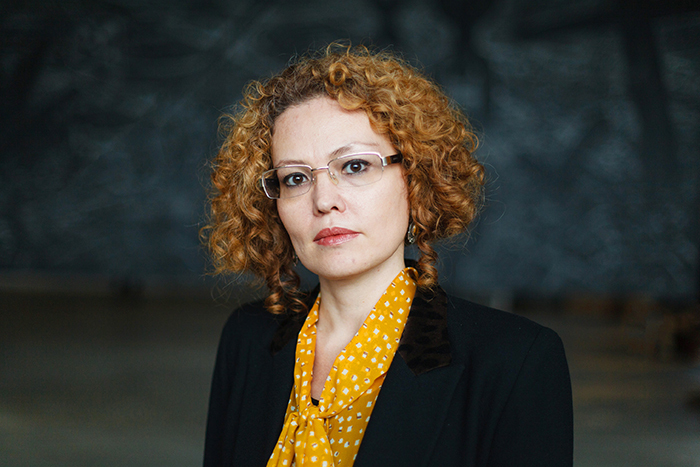
Madina Tlostanov. Photo by Mikhail Golgenkov / Theory and Practice
Criticism of the Western-centric nature of social and humanitarian knowledge and the search for new perspectives that would thoroughly and inclusively demonstrate human society became an important concern in social sciences and humanities in the 20th century. Emergence of new nation-states after the collapse of colonial empires, globalization of the economy, and new migration and communication opportunities changed the world as well as the ways of understanding this world. The psychiatrist and political philosopher Frantz Fanon from the Caribbean colonies of France was one of the first researchers of colonial and post-colonial theory in the 1950s. In the late 1970s, Edward Said, an American intellectual of Palestinian descent, published the now-classic work Orientalism. With this term, he described the processes of othering the Middle East in Western European literature and culture, the construction of a certain binary between “East” and “West.” Sociologists Andre Gunder Frank and Immanuel Wallerstein worked on an economic analysis of global inequality. Feminist theories and practices also did not remain indifferent to the ongoing changes.
IS “WESTERN FEMINISM” MEANT FOR EVERYONE?
The Second Wave of feminism was born in the United States in the mid-20th century, at the same time when the American Civil Rights Movement and the Gay Rights Movement were emerging on the pages of the country’s history. Second-wave feminism originated from white women – mostly middle-class, educated, often heterosexual, and coming from “first-world” countries. From the standpoint of intersectional analysis, we would call them privileged along many axes of inequality, except for their gender. Such a power balance determined the basic thesis of this political movement.
The fundamental assumption on which radical feminism, or second-wave feminism, was based is an assertion that all women had a common female experience of oppression, in which gender inequality was presented as quintessential, reflected in various spheres of life. I am willing to bet that the Second Wave saw the opposition between female and male genders as determining since, by other criteria, the vast majority of these women belonged to privileged categories.
However, the experience of “feminist sex wars”, where lesbians and BDSM practitioners opposed heterosexual “vanilla” women (those who preferred conventional sexual practices), challenged this simplistic concept. As it has turned out, sexual practices also have their own hierarchies, and feminists whose practices are higher in this hierarchy may be openly hostile to those with marginal preferences, and thus women from these different categories cannot be defined as sisters. Shortly afterwards, another hierarchy between white and black women became visible and articulated, which marked the beginning of the Third Wave of feminism, also known as intersectional feminism.
According to bell hooks (written in lower case upon her own request), a Black theorist of third-wave feminism, the percentage of Black women in the United States who sought gender equality was higher than among white women, but Black women remained underrepresented in the Second Wave. hooks explains this fact by pointing out that the agenda of the Second Wave did not reflect the interests of different groups of American women, but only of those whose skin was white. Thus, she introduces the concept of intersectionality into the theoretical paradigm of feminism, the intersection of discriminations. There is more than one hierarchy: inequality exists not exclusively between women and men, not exclusively between whites and Blacks, not exclusively between heterosexual and LGBT+ people. The positions and problems of a white man, a white woman, a Black man, and a Black woman are different – these are four different social situations. The intersection of discriminations can be represented as a multidimensional matrix, where each person has a set of characteristics according to which they simultaneously can be an object of discrimination and privilege.
It is important to mention that the relationship between race and gender was indicated in the 1850s by the former slave girl and later women’s activist Sojourner Truth. Despite being illiterate, she reflected well on the fact that she was neither recognized nor considered to be a woman. [4] The First Wave of the American women’s movement, however, was marked by undisguised racism, and thus feminism could thoroughly process Truth’s ideas only more than 100 years later. bell hooks’ first work, Ain’t I a Woman?, borrows its name from Truth’s famous speech delivered at the Women’s Convention in Akron, Ohio, in 1851. Only 130 years later had Black women become so visible that they were finally heard. This story is a great illustration of the intersection of discriminations.
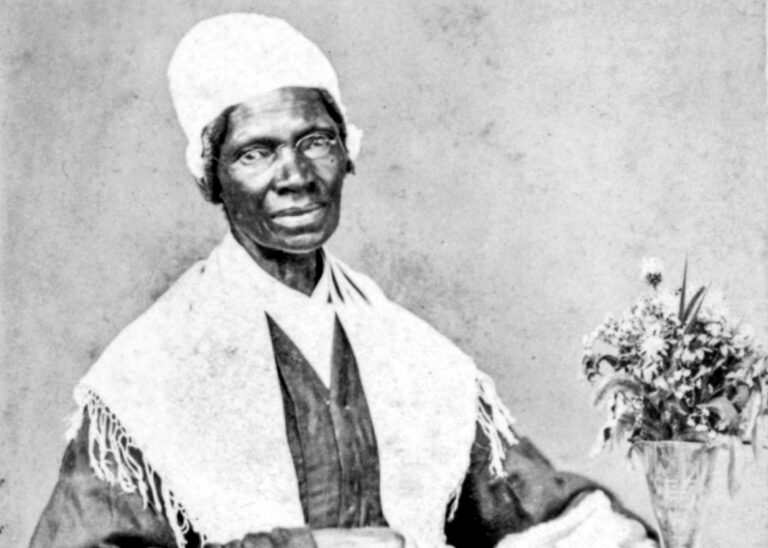
Sojourner Truth. Unknown photographer.
It is important to note that not all white feminists were satisfied with the second-wave kind of thinking. In A Cyborg Manifesto, Donna Haraway criticizes Catherine MacKinnon for the “totality” of the paradigm that defines women by shared female experience: “MacKinnon’s radical theory of experience is totalizing in the extreme; it does not so much marginalize as obliterate the authority of any other women’s political speech and action. It is a totalization producing what Western patriarchy itself never succeeded in doing—feminists’ consciousness of the nonexistence of women, except as products of men’s desire. I think MacKinnon correctly argues that no Marxian version of identity can firmly ground women’s unity. But in solving the problem of the contradictions of any Western revolutionary subject for feminist purposes, she develops an even more authoritarian doctrine of experience.” [5]
The intersectional paradigm allows involving in the analysis not only American Black women, but also women from other cultures. Not all world cultures have gender binary system; some traditional cultures are characterized by what modern society calls transgender. These are, for example, two-spirited people in the cultures of the North American Indians, the Hijra (legally recognized “third sex”) in India, and the Albanian burrneshas (women who live as men). Moreover, not all cultures that have binary gender oppositions reproduce gender roles according to Western societies’ patterns. Awareness of these facts allows us to be critical of the radical feminism paradigm and its limited and Western-centric nature.
The idea of producing feminist knowledge on the basis of reflecting on colonialism has been actively discussed in recent decades. For example, Chandra Talpade Mohanty, an Indian researcher working in the United States, believes that Western feminism generally constructs a distorted image of the “average third-world woman” (sexually limited, uneducated, poor, tradition-oriented, family-oriented, victimized, etc.). [6] In fact, this image stems from the intersection of the Third World contrasts (as they are generally represented in the First World) and gender differences.
Mohanty demonstrates the framework that determines such an image:
- Women as victims of male violence;
- Women as universally dependent on men;
- Women as victims of family systems;
- Women as victims of religious ideologies.
This framework constructs the generalized image of a woman as opposed to the generalized image of a man, and by generalizing this opposition, it becomes stabilized in a world view system. According to Mohanty, the non-historical and universal solidarity of women based exclusively on their subordination to men is not an analytical demonstration of this subordination in its various dimensions and manifestations, and therefore cannot be a source of constructive transformations. On the contrary, it reduces the female subject to gender identity, rejecting all her other identities. For example, the circulation of this average image can be seen in discussions on Islam and feminism, although it does not apply to an educated American or Canadian from a Muslim but liberal family.
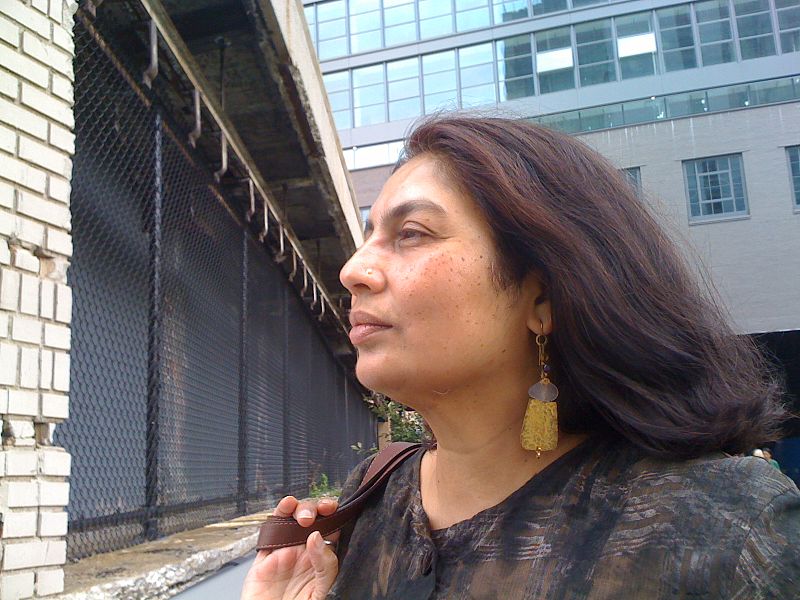
Chandra Talpade Mohanty. Source: Wikipedia
Despite long-lasting debate, especially in academia, where people certainly do not lack access to knowledge, Western feminism is still often disparaging of women’s concerns outside the global West. The line of inequality runs not only between white and Black American women, but also between those born in First World countries and those who emigrated there, and between the citizens of these countries and the women who live in the Second and Third World. Madina Tlostanova shows that white European women were perceived as the normative embodiment of femininity in the socio-cultural sense, while colonized women not only took a lower position, but also were regarded only as carriers of biological sex and commonly excluded from female gender. [7]
Argentinian researcher Maria Lugones argues that the Eurocentrism of global capitalism has narrowed the concept of gender to the issue of control over sexuality and reproductive function. The researcher demonstrates that the central demands of feminism – to stop considering women weak, closed in the private sphere, and sexually passive – applied only to white bourgeois femininity. [8]
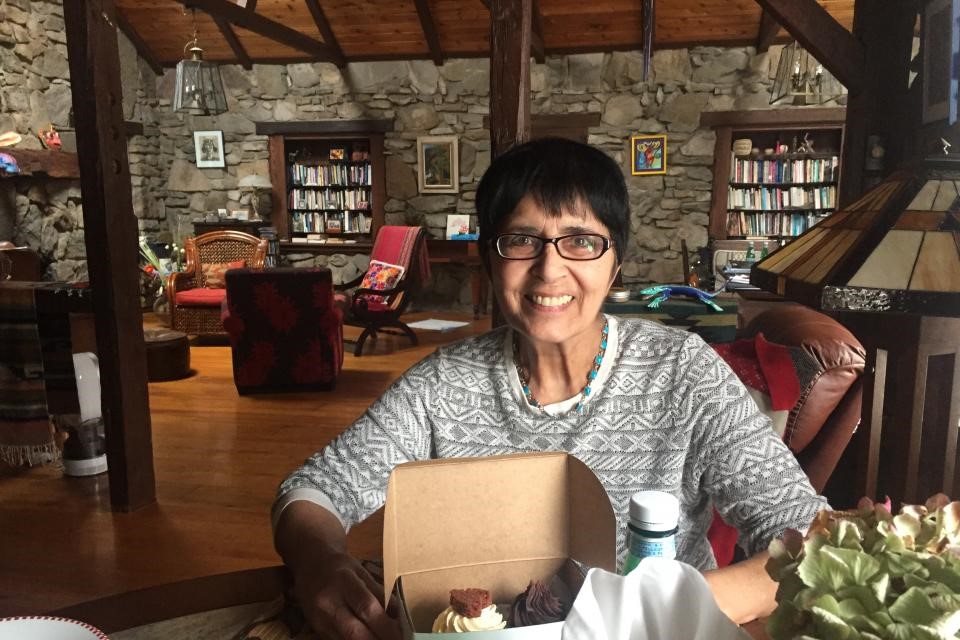
Maria Lugones. Source: Página12
The history of the women’s movement in Latin America dates back to the 17th century: it derives from Sister Juana Ines de la Cruz, a nun who wrote secular treatises and argued the importance of women’s education. [9]
The paradigm of the three waves of Western feminism does not include “jineology”, the theory and practice of Kurdistan women’s emancipation, or the Spanish women’s anarchist movement Mujeres Libres (“Free Women”) during the civil war. [10]
Researchers and activists – those who work in the global West and those who stay in contact with it – claim that their exotic names and appearances are perceived with anxiety and as an invitation to stereotype. [11] Their attempts to develop their own style of writing are treated as a lack of academic culture. Local researchers, deeply immersed in the context of the research topic, in best-case scenarios are recognized as “respondents” rather than partners, and in worst-case scenarios, they suffer from plagiarism when their opinions are presented as those of their Western peers. [12] “We, the women of Central Asia, are the source material, the ‘field’, the kind of fuel that feeds the production of knowledge about us, but not for us,” wrote Synat Sultanaliyeva, an activist from Kyrgyzstan. [13]
THE IMPERIAL NATURE OF THE USSR AND THE NEGLECT OF PRE-SOVIET FEMINISM
Until 1917, Russia was an empire and a “prison of nations, the key to which is kept by the emperor” (Adolf de Custin, Russia in 1839). The revolutionary transition to the USSR did not improve the situation fundamentally. The Ukrainian language functioned in the cultural sphere and was not repressed as much as during the time of the Valuev Circular or the Ems Ukaz (Ems Decree); however, its literary version was adapted and brought closer to Russian, while sanctioned manifestations of Ukrainian culture were very limited. This led to the emergence of “sharovarshchina”, a concept that means artificial folklore, actually constructed in Soviet times.
The Soviet version of processing the ethno-national differences unpleasantly is reminiscent of a communal apartment (a metaphor used by Soviet studies specialist Yuri Slezkine [14] and in a song lyrics of the once popular band Dune), where all the nations are supposedly equal, but the Russian nation is more equal than the others, as the nation of the former imperial metropolis and the initiator of the Great October Socialist Revolution. They are the great protagonist living next to the generalized, stereotyped, and comic “Gulnara”, “Zuckerman”, “Gogi” and “reindeer herder Belda.” [15] [Editor’s note: Azerbaijani, Jewish, Georgian, and XX names, respectively.]
The “Soviet” ideal was constantly devolving into the “Russian” ideal (partly limiting Russian culture, not all manifestations of which fit into the Soviet ideology) and the art works of local artists were criticized for “nationalist bias” (even when nationalism was not referred to any of its dictionary or scholarly definitions, thus fixing the word’s negative discursive connotation). [16] The main post-Soviet dimensions of discrimination are not solely grounded in class differences, as Daphne Rachok and Roman Leksikov believe, nor are they racial as those in the USA. Rather, they have a distinct color of regional and cultural privileges centered in Moscow. [17]
Ukraine’s dependent post-colonial position was the reason for Russia’s military invasion of the Donbas and Crimea, as well as Western countries’ utterly reluctant reaction to this invasion. A researcher of colonialism, Fabio Belafatti indicates how Orientalism (othering of the East) is constructed regarding Ukraine and its positions in the Russian-Ukrainian war. Belafatti writes that when a Western commentator says that Russia fears Ukraine’s inclination towards NATO, “he’s basically implying that Russia does indeed have an inalienable right to claim rights in the region, as if Eastern Europe was nothing but a tool to compensate Russia’s unresolved inferiority complexes.” [18]
Ewa Thompson, a researcher of Russian colonialism, writes that Russia is commonly not regarded as a colonial state, partially due to the geographical location of its colonies, which border the metropolis and are not located overseas. [19] In the case of post-Soviet countries, Western researchers often limit themselves to studying only Russian, and therefore transfer to their research those social, cultural, and semantic biases that distinguish native speakers of Russian in each separate case. [20]
It is important for this text to bring such rarely discussed matters to the forefront, because the women’s issue in the Soviet Union was constructed at the intersection of the claimed emancipation of women (which was indeed partially carried out, especially in the early years of Soviet rule) and specific national policy.
The popular film White Sun of the Desert constructs an image of a man who brings emancipation to Central Asian women (thus, consolidating the stereotype of a white “progressive” colonizer and non-white “savages”). The rich pre-Soviet history of women’s movements had been erased and silenced.
The women’s movement in Galicia (Halychyna) during the rule of the Austro-Hungarian Empire and the inter-war period after the region was forced to join the USSR did not fit into the official history, and thus became completely invisible. The Soviet government constructed a “new man” divorced from the “old man”; hence, a woman could only be a “worker” or a “peasant.” The pre-Soviet history of the USSR nations was reconstructed according to uniform patterns that allowed room only for certain sub-kinds of class struggle, which involved only men.
The differences between women’s history and culture, women’s experiences, and women’s needs, more elaborated than “Muscovites have two pigtails, Uzbeks have twenty-five”, were erased and adjusted to an averaged specimen standing much closer to Muscovites than Uzbeks.
All this pre-history influences how we see ourselves now. In 2018, some Ukrainian feminists criticized the Women’s March organized by the NGO Insight. In particular, one remark concerned the font of the logo, allegedly taken from the far-right Right Sector organization, although in fact it was a slightly modified font of one of the founders of Ukrainian graphic design, Heorhiy Narbut. Thus, even in 2018, a completely innocent appeal to national culture, which did not enter the Soviet-approved cultural field, was labelled as “nationalist” = “bad.”
THE INFLUENCE OF THE FEMINIST RUNET AND ITS INTERNAL PROBLEMS
After the collapse of the USSR, the complicated issue of Soviet national policy took a new form, this time, according to Rogers Brubaker, in the triangle between the new nation-states, national minorities in these states, and national homelands of these minorities. [21] Each of these actors understood and practiced nationalism differently; the same, I would add, was true for the women’s issue.
Feminists of the newly emerged nation-state Ukraine often regard Ukrainian nationalism as one that does not contradict feminism and even reinforces it, and which does not coincide with the understanding of nationalism in the Western academic and feminist paradigms. Although the word “feminism” remained mainly unknown at the time, various women’s organizations that defined the policies and objectives of the women’s movement at the dawn of Ukraine’s pro-independence struggle began to appear in Ukraine in the 1980s, e.g., the international organization Zhinocha Hromada (“Women’s Community”), Union of Women of Ukraine, and the Olena Teliha All-Ukrainian Women’s Society.
When the formal goal – the proclamation of independence – was achieved, the focus of women’s organizations in the 1990s shifted to protecting women’s interests through their support in environmental, charity, and political representation. [22] Liberal feminism in Ukraine is rooted in this movement and advocates for women’s electoral quotas, women’s entrepreneurship, women’s participation in decision-making, and women’s empowerment through acquiring knowledge, skills, tools, and resources.
However, the old ties with the former metropolis, which had been an intellectual and cultural center (as well as a center of resource accrual), remained and had their impact. In 1995-2001, the Russian TV channel TV-6 aired the women’s talk show Ya Sama (“I, Myself”), which was also broadcast in Ukraine. Its co-host, writer and playwright Maria Arbatova, was the first Russian public figure to call herself a feminist, and she enjoyed some popularity in the post-Soviet states.
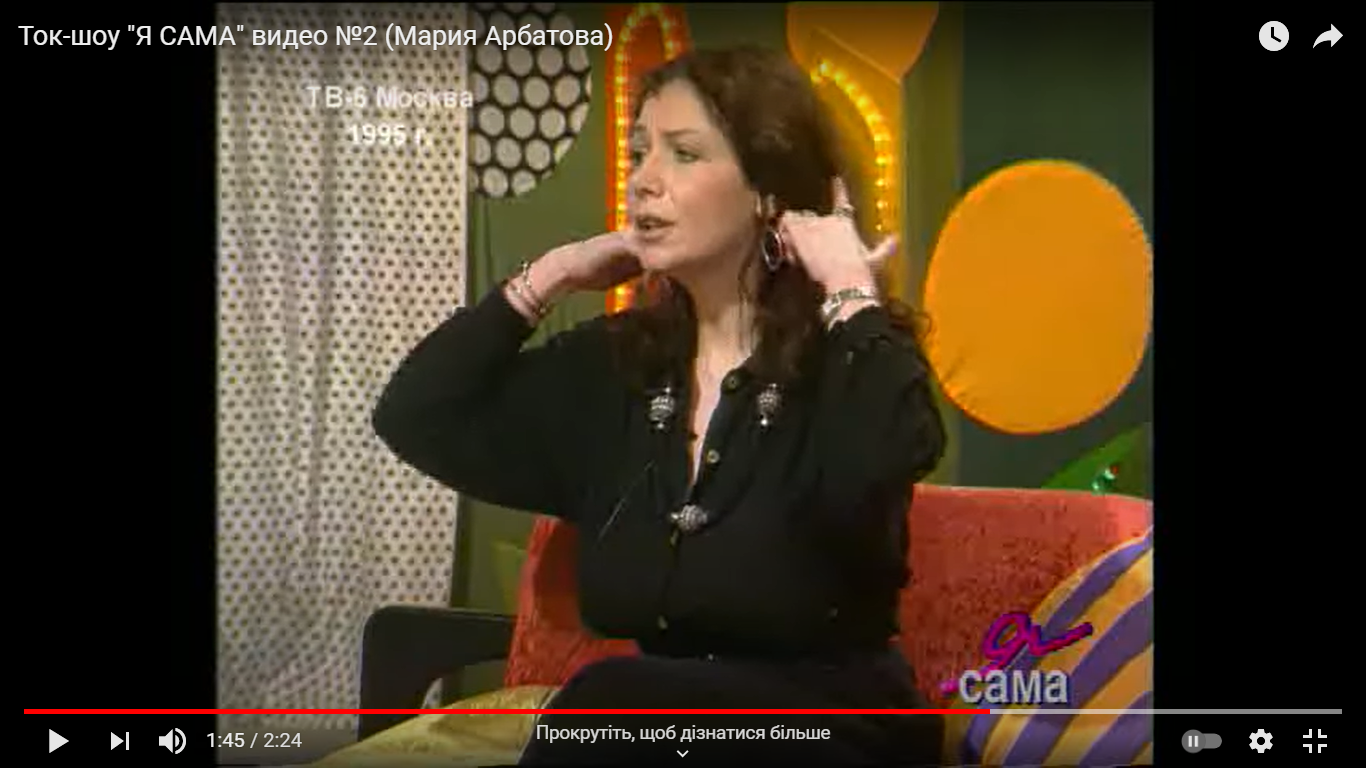
Maria Arbatova. Screenshot from “Ya sama” episode.
Since the mid-2000s, social networks gradually began to develop in Russia and Ukraine, giving users of different backgrounds and biographies the opportunity to connect with like-minded women and learn more about certain topics. In social media, Russian, as “the language of international communication,” continued to unite women of the post-Soviet space, including immigrants from the former Soviet Union to the United States, Israel, Germany, and other countries.
On February 5, 2005, Moscow-based LiveJournal user Elizaveta Morozova (username sadcrixivan), who published translations of Western journalistic articles, created the Feministki community. Eventually, the community counted several thousand users, and for a long time remained perhaps the largest point of entry into feminism for post-Soviet Russian-speaking women.
This community published translations and adaptations of Western works on feminism as well as discussions on feminist topics. With some exceptions, the conscious feminist movement in the late Soviet Union did not actually exist. It is remarkable that the celebration of women’s emancipation on March 8 had been transformed into a day of “spring and beauty.” [23] Therefore, the introduction of feminism in the post-Soviet space was marked by its double colonial nature: feminist knowledge was first transferred from the West to Russia, and then from Russia to Ukraine.
The author of this article also became a feminist due to the active discussions in the Feministki community. I cannot remember any similar Ukrainian platform that would provide a space for discussing feminist topics, that would familiarize its participants with different points of view on various feminism-related subjects and facilitate their introduction to the feminist stance (the Feminism_ua community, although established a little earlier, was rather an information platform for collecting thematic publications; regular discussions did not take place there).
After 2014, some Ukrainian feminists left Russian platforms in social networks and switched to Ukrainian; for instance, they joined the Feminism_ua community on Facebook. However, Ukrainian users, especially the youngest, continued reading Russian community pages on Facebook and followed Russian bloggers on YouTube and Instagram (e.g., Sasha Mitroshina, who came to Kyiv to meet her audience), and thus they are getting an idea of feminism from a Russian perspective.
Around 2012-2013, Russian-speaking feminists discovered the ideas of the Second Wave of feminism through translations made or republished by several bloggers (accion-positiva and the team of the community womenation, which has now stopped their activity), who first introduced post-Soviet women to the works of Andrea Dworkin, Sheila Jeffreys, Gerda Lerner, Marilyn Frye, and Phyllis Chesler. The lack of access to the original publications and the context in which they first appeared led to the uncritical reproduction of American heated debates during the feminist sex wars, such as whether lesbian issues belong to the feminist agenda. [24]
Such a state of affairs had its consequences: limited and selective acquaintance with feminist theory led to the indoctrination of these ideas, which seemed to finally acquire justification. A limited part of the theory – often discussed, developed, refuted, and put in a specific context in the West – started to be recognized as the only true and accurate source of knowledge. Radical post-Soviet feminists often demand to “study the theory”, meaning a limited number of authors, and address this call to women who can object only referring to their personal experience, and not theoretical knowledge, as they often have insufficient access to the theoretical materials and are unfamiliar with the development of feminist theory after the radical American Second Wave.
On the other hand, the advent of social networks in 2010 with their function of creating thematic public pages changed the nature of online discussions, which started to become increasingly decentralized and divided according to their sub-ideological grounds. Feminists who were fluent in English and could navigate through the English-speaking segment of the Internet began to borrow modern American feminism terminology from tumblr and other social media, e.g., concepts of intersectional feminism, body positivity, cultural appropriation, terms for describing non-cisgender and non-heterosexual variances, problems of minority representations in Hollywood films and video games.
These concepts are not always approached and comprehended critically. A fine example is the magazine Wonderzine Russia. Its readers have repeatedly expressed their desire to read more about real Russian women in their class, ethnic, and national diversity and less about the progressive Western agenda. Contrary to their requests, the magazine continues publishing about cultural appropriation of Black women’s hairstyles and the representation of Blacks in American TV series, while ignoring Russian stories of racism against women who do not belong to the Russian ethnic group, the slave history of the Russian Empire, and other local topics. The magazine, I would add, demonstrates an attitude of superiority towards Ukrainian women and unwillingness to admit their share of responsibility for Putin’s policy, which includes the war in the Donbas and the occupation of the Crimea. Moreover, Wonderzine Russia often demonstrates classism disproportionate with the financial situation of many Russian women. [25]
Feminist and blogger Zhanna Poyarkova has commented, “Other development, other justice, other mechanisms; but the websites publish agendas, discoveries, and struggles that remain alien [transl.: to the nation-states that emerged after the collapse of the Soviet Union] (well, not completely alien, but we are now experiencing a different stage of the same processes – a different year even). And you are sitting and reading the news about unfamiliar people, you learn to understand them while existing in a completely different environment. This creates a very strange state of mind. Mentally, you are living within the global culture paradigm (mostly American-European movies, music, literature, games, etc.); however, you are being surrounded by completely other things.” [26]
Russian feminist Yana Markova believes that importing intersectionality as a ready-made theoretical model from the West, instead of developing it within local material and experience, generates, among other things, transphobia, Islamophobia, and xenophobia. According to Markova, due to the insufficiency of American models designed for American problems (e.g., the white-Black dichotomy as one of the most fundamental ones, which does not work in the post-Soviet space), some feminists turn to the Second Wave, which, while also being imported, is an older version of feminism that takes into account only one dimension of discrimination, gender, making the agenda more straightforward, and therefore more aggressive. [27]
Russian activist Daria Serenko points out that the concept of “sisterhood” based on the assumption of women’s shared experiences, which was fundamental for the American Second Wave, in reality works to divide women: a feminist (or any other woman) can be declared a “non-sister”, and thus be removed from the movement or from the beneficiaries of the movement. [28] In 2014, activist Lyubov Kalugina wrote a detailed manifesto, in which she removed from the “sisters” even those who wore short jackets in winter, completely ignoring the fact that not everyone lived in the cold climate of Siberia like Kalugina herself, and created a “board of shame” for feminists who objected to her claims. This is a rather curious example, but it was generated by ignoring the differences in experiences and circumstances. [29]
A part of the Ukrainian feminism agenda also does not originate from the local context, but is uncritically borrowed either directly from the West or through Russian dissemination channels. Two main topics, which remain popular in the large Facebook group Feminism_UA, are both borrowed. The first one is a favor of the Swedish Model in Ukrainian feminism. The Swedish Model is not the grassroots desire of women and men who have experience providing sexual services on a commercial basis; rather, its image has been developed from the positive reports of foreign media. However, in my experience, proponents of the Swedish Model are reluctant to answer the question of how they imagine a source of income for a woman who can neither continue to work in the commercial sex industry due to the criminalization of her clients, nor receive an equivalent salary elsewhere.
The second borrowed topic is the transphobic stance of some feminists; the arguments that rationalize it are also adopted from the foreign press (mainly the American conservative one). For example, the “violence in public bathrooms” argument is a slightly altered racist argument about the segregation of Black people in the United States, when they were accused of such attacks and denied access to public bathrooms and drinking fountains used by whites.
Ukrainian feminism is also not exempt from Islamophobia, despite the fact that real Ukrainian Muslim women are politically active and aware of their interests to such an extent that they take part in women’s marches [30] and local elections. [31] Their image in discussions is often fashioned as the “average third-world woman” described by Mohanty in the mid-1980s.
Ignoring the social stratification based on class differences makes the global version of feminism imported from the West too right-wing, and therefore uncritical of the existing financial inequality. Just as uncritical pacifism in the context of the Russian-Ukrainian war favors the aggressor state, an uncritical attitude to class inequality does not work on the side of women in Ukraine. When third-wave American feminism is transferred to Ukrainian ground, one important point seems to be fully ignored: class differences in American society are encoded within racial differences, and thus require no extra articulation. If an American woman speaks of a “white heterosexual man”, the same message will sound to a Ukrainian woman like a “rich heterosexual man.”
The unconscious adaptation of the American-tailored discourse, which is mainly rooted in the dichotomy “white-Black”, will certainly help us test our privileges regarding the students from Black African countries (the Soviet “friendship of the peoples” did not foster any real equality and the presence of this kind of racism is quite obvious), but will not raise awareness of the blatant structural discrimination of the Roma population of Ukraine, a part of which do not even have identification documents. It will not facilitate realization of either our own poverty or the fact that for the people of the United States we are not white: we are only passing as white, we just look “white.” The same as neither Irish diaspora nor Circassian women, who were sold in the United States as expensive slaves, were considered to be white, since “whiteness” in the American sense of this word also requires belonging to a certain social class and an influential, preferably “southern”, genus. [32] [33]
Examples of the reflections of Russian feminism on colonialism are infrequent and, as a rule, do not include Ukraine. [34] In my article Russian-Ukrainian War since 2014 and Feminism, I have already argued that Russian feminists do not apply women’s solidarity and “sisterhood” to Ukrainian women, and they do not contemplate – except for in rare individual cases – their privileged position and the fact of paying taxes to the budget of an aggressor state. [35]
Ukrainian feminists, who are located in the common information field, partially broadcast the Russian agenda (e.g., announcements of events and lectures) on their social media pages, but it is always an unequal and unfair exploitation of labor in the media space and never mutual support. Russian feminists do not post Ukrainian announcements, they are not interested in the stories relevant to Ukrainian feminists, they do not sympathize with difficulties faced by the Ukrainian feminist community, nor do they rejoice in its success. Occasionally though, Russian feminists react harshly to requests for support and solidarity. [36]
This disintegration of “sisterhood” contributes to the decolonization of Ukrainians’ consciousness. [37] The author of this article was once asked to post a text in support of the Khachaturian sisters (a high-profile case in Moscow of self-defense against domestic violence) in a Telegram channel dedicated to... Ukrainian far-right movements; the channel description explicitly indicated both its subject matter and territorial affiliation.
The history of establishing the Ukrainian branch of Wonderzine also highlights Ukrainian feminism’s partial dependence on Russian. As soon as it was announced, the localized version of this Russian media immediately attracted the interest of many potential authors, most of whom had not yet appeared in Ukrainian feminist publications and seemed to have heard nothing about Gender in Detail, Povaha (“Respect”), Update, 50%, WOMO, The Devochki (“The Girls”) [transl.: Ukrainian media on gender equality]. They were not even stopped by the bad reputation of the magazine’s owner, media holding Look At Me, which is notorious for non-payment of wages in Russia.
ACADEMIC FEMINISM: FROM WEST TO EAST?
Women who did not have such an entry point (did not hear about it, did not have a sufficient level of education, did not see the connection between feminism and their own needs) were and probably are still far from the theoretical framework. However, academic feminism has also developed in Ukraine with adaptations of the Western and Russian agendas. In the early 1990s, Ukrainian researchers, especially literary critics, discovered gender studies as a large and well-developed interdisciplinary field with its own analytical apparatus and academic environment. Subsequently, Ukrainian scientists and women interested in academic work began to develop gender studies in Ukraine, write their own works, translate scholarly papers, open research centers, etc. [38]
Academic feminism in Ukraine can be considered somewhat developed and is based more on Western grants and the enthusiasm of female researchers than on the strategic support of universities (anti-discrimination ideas are still not welcomed in many universities). Local successes include, for example, a Master’s program in gender studies that started at the Taras Shevchenko National University of Kyiv in 2017 and separate courses taught by the Department of Sociology at the Kyiv-Mohyla Academy.
By the early 2010s, more than a dozen feminist summer schools designed by the Kharkiv Center for Gender Studies had been held in Foros, the Crimea, and a 3-year Higher Education Support Program (HESP) Gender, Sexuality, and Power seminar was launched in 2011. These events provided an environment necessary for the in-depth study of feminist theory, but they were focused on advanced audiences in the academic and semi-academic social bubble. Moreover, the Kharkiv Center for Gender Studies conducted its work in Russian and was also more Russian-oriented in the academic context.
There is still no powerful academic center that could introduce gender theory to Ukrainians in the Ukrainian language, partially due to a lack of funding for such a project. The Feminist Offensive, which began in 2011 and could be described as an educational project and an activist group, tried to do this. The desire to implement such a combination can only be welcomed, although the problems confronted by the activist group – sexist and homophobic laws, compulsion of female students to work – did not completely match their theoretical work (i.e., translations of Donna Haraway’s works).
In addition, the Feminist Offensive instigated the first public debate on separatism in the women’s movement. [40] Some of the group’s activists collaborated or took part in the Kyiv left-wing movement, which, although it had more male that female participants, claimed to be pro-feminist and already had experience organizing and taking part in various events on women’s issues. When the Feminist Offensive declared that “only women can be members of the group and take part in decision-making at meetings” (without giving any further explanation about transgender and non-binary people, which provoked another discussion about the presence of women’s experience in these groups), male pro-feminist activists found such a statement to be incomprehensible and unjustified. [41] Their critical claims induced further allegations: they were accused of exploiting their wives and partners, and the women from the left-wing movement who also did not understand the advantage of separatism were branded as their “faithful friends.” [42]
In the end, the discussion came down to a common denominator: the idea to create a left-feminist initiative that would include both men and women and which was provisionally named Tovaryshka (“A [Female] Friend”). This initiative finished with the registration of a domain of the same name. A year later, the unused domain name was donated to the author of this article, who, with the help of other women and queer people, created and maintained a small independent media site focused on intersectional and left-wing feminism in 2013-2018.
The Feminist Offensive remained active until 2014, was subsequently integrated into the Women’s Hundred of the EuroMaidan protests, and completely ceased its activities in 2014.
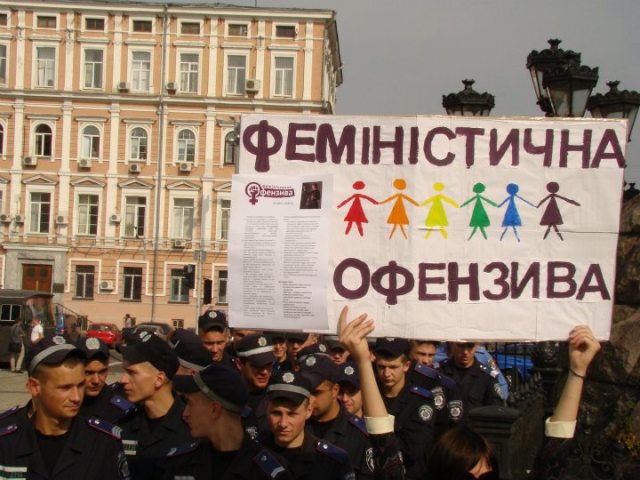
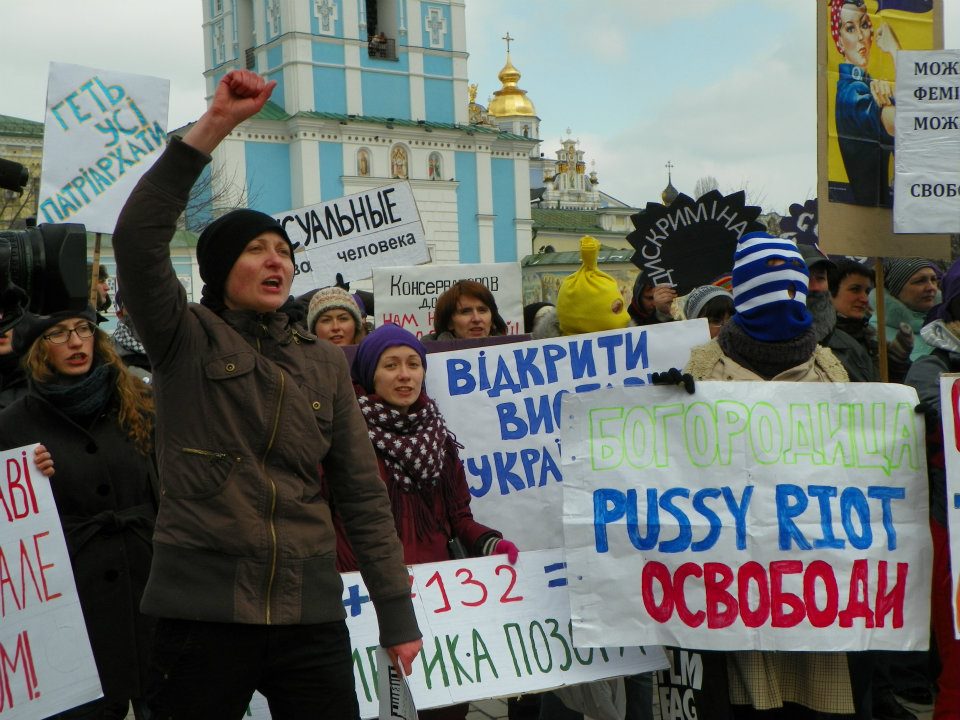
Student counter-forum “The Other Side of Education”, September 22-23, 2011, and women’s march on March 8, 2012. Source: Feminist Offensive
The academic feminism optics often do not consider the reality of Ukrainian women. “Moderniz[ation] according to what was perceived of as European advancement” seems to be an attempt to fit Ukrainian reality into a matrix formed in a completely different environment. The article written by Olga Plakhotnik and Maria Mayerchyk Between Time of Nation and Time of Feminism: Genealogies of Feminist Protest in Ukraine, which was declared critical of colonialism, actually bypasses the local context. [43] This alleged criticism of colonialism turns into criticism of women’s participation in grant funding opportunities for NGOs. However, for Ukrainian women who are permanently or temporarily engaged in such third-sector projects, it is often an opportunity to do the same things they would do as a part of their unpaid activism – not in the third shift after their regular job and housework, but in the first shift and also for a salary, not for free.
For women employed in such projects, it is an opportunity to be financially independent, without working for capitalist corporations, giving added value to employers, or relying on the mercy of a husband or wealthy parents. Moreover, grant practices bring money to Ukraine from the global West, and spending it inside the country somewhat levels the material inequality of the region in the global inequality system. Criticism of the so-called NGOization – the professionalization of political activism – is probably relevant for Western societies, but in the Ukrainian reality, the shortcomings of NGOization are not quite obvious and do not outnumber its advantages.
The same article mentions “the queer art of failure” (that is, a permission to fail), and the author of this metaphor who has the privilege of enjoying it – queer person Jack J. Halberstam (Judith at the time of publication), who lives in the United States, comes from the family of a famous mathematician, graduated from Berkeley, and teaches at Columbia University. For most Ukrainian as well as American women and queer people, Halberstam’s “failure” is unattainable, and talks about failure articulated by such a privileged person may sound like mockery. The logic of giving up success in favor of enjoying one’s failures does not work for people who live in such disadvantageous conditions that failures follow them everywhere, unlike success, which they may never experience. In addition, the very categorical system of success/failure, rather than ethics or self-actualization, is an absolute product of Western capitalism and is not rooted in the local culture.
Apparently, the target audience of appropriated Western feminism is sometimes required to intellectually belong to a certain elitist Western context (judging by the use of terms such as “denaturalization” without deciphering its meaning [44] and publishing a portrait of Judith Butler without any explanation who she is and why her views are interesting [45]). All of the above-mentioned clearly does not popularize this particular version of feminism among women that cannot identify themselves with white and educated Western women.
In the article Russian-Ukrainian War since 2014 and Feminism [46], I also mentioned that the criticism of feminist work in favor of women in the Armed Forces of Ukraine ignored the fact that the salaries paid by this employer are significantly higher than the national average. [47]
Another enemy, adopted from another context, is “neoliberalism.” In the West, this term refers to a market-oriented economic policy that replaced the more worker-friendly “welfare state” in the 1980s and which the Western left movement wants to restore, since it is their achievement that was lost. Ukraine has never been a “welfare state” like European countries or the United States of the mid-20th century. This suggests that criticism of neoliberalism is not always inscribed in the broader critique of capitalism (it appears that the authors of such criticism allegedly find other forms of capitalism to be normal), and social elevators in Ukraine function differently than in the “first-world” countries.
In Great Britain, social stratification and discrimination rooted in it are real. Rejection of a CV that shows a home address from a “bad neighborhood” – a situation quite typical for the UK – could not be imagined in Kyiv. This is because social and cultural stratification has been produced in Western societies for centuries, while Ukraine has a different history and such stratification is much less prominent. Moreover, Ukraine’s economy is built and operated within a different regulatory framework. This text does not intend to answer the question of whether neoliberalism exists in Ukraine, but I insist that its existence should not be taken for granted and should be at least proven by analyzing local material.
Academic feminism, except for certain topics such as women’s history or literary studies, is poorly represented in Ukraine due to the lack of material and time resources necessary to produce this kind of knowledge, although some researchers have already achieved significant success in this field. And here we come to the question of who has the resources for feminism in Ukraine – not due to scholarships from Western universities, but as a result of financing inside the country.
LIBERAL FEMINISM AND GENDER MAINSTREAMING
The Council of Europe defines “gender mainstreaming” as the integration of a gender equality perspective into a country’s policies at different levels. [49] International organizations that commit Ukraine to certain actions in order to achieve gender equality and grant programs from other countries invest their resources in developing mainstream or liberal feminism in Ukraine. This kind of feminism focuses on achieving legislative equality, women’s representation in government and business, women’s empowerment, and introducing gender-oriented budgeting (gender mainstreaming strategy integrated into the budget process). In fact, this policy line is a logical follow-up of the First Wave of feminism and no country in the world has achieved full equality in these issues yet. Thanks to strong institutional support, this line of development is the most successful in Ukraine. Liberal feminism in Ukraine is supported in various ways by the embassies of the United States, Great Britain, Sweden, and other countries. Feminist publications Povaha, 50%, and Gender in detail work using these grant funds.
Mainstream feminism generally may involve a certain level of agenda localization, if, of course, we do not consider Ukraine’s international commitments as colonial borrowings. For example, the author of this article works to adapt the Women, Peace, Security agenda to the Ukrainian reality. Manipulations that surround gender-related topics and anti-gender movements, which have recently spread both inside Ukraine and abroad, are seen as part of Russia’s hybrid war against Ukraine at the level of the Deputy Prime Minister’s Office for European and Euro-Atlantic Integration. [50] The Interfactional Parliamentary Association Rivni Mozhlyvosti (Equal Opportunities), established in the Ukrainian parliament in 2011, also has a public council on gender issues that presents gender agendas to the parliament.
IS A UKRAINIAN ANALYSIS PARADIGM POSSIBLE?
All of the above-mentioned does not mean that Ukrainian feminism does not have or will not have its own voice in the near future. However, both theoretical and applied feminist research based on local material requires professional skills as well as time and financial resources, which are currently insufficient. Ukrainian feminists, as well as Ukrainian civil society in general, have been showing tremendous results driven by “pure enthusiasm” for years, but sustainable progress requires sustainable resources.
For example, Gender in Detail, for which I am writing this text, can pay for this analytical work due to the financial support provided by the Heinrich Böll Foundation. However, according to the platform’s editor-in-chief Tamara Zlobina, online magazines cannot, and should not, pay for all the work needed to create such materials. Academic feminist research should be conducted in universities, which would pay their researchers salaries and thus finance this research. The results of their work, first presented in professional academic journals, should later be processed and adapted for a general reader. Instead, Gender in Detail often commissions articles on topics that are not studied in the Ukrainian context, and thus the website’s “Topics of the Season” section features many texts that address certain issues for the first time in the Ukrainian language. This situation creates an excessive burden on both the author and the editorial board.
Activist movements need organizational, financial, and time resources. The lack of these makes Ukrainian feminism still dependent on Western and Russian feminism: less in its activist part, more in its analytical part. While the level of our management to organize the women’s march on March 8, sign the petition to ratify the Istanbul Convention, and coordinate other collective actions is rather high, in terms of the paradigm of analysis and reflection, we are still drifting somewhere between uncritical adaptation from the West and/or “chewed” borrowings from Russian paradigms – neither of which was relevant to Ukrainian society at the stage of its invention or fashioning. The reason why we still consume the “leftovers” from other people’s tables is easily named and does not need a special explanation: it is the structural lack of resources for consuming and producing paradigm knowledge and self-analysis skills.
It should be acknowledged that most of the resources for developing feminism and introducing gender equality in Ukraine come from the developed capitalist countries of the West; this situation has lasted for several decades. Actual local production of knowledge is possible only when the consumer and the source of funding of such knowledge is the society itself.
[1] https://genderindetail.org.ua/season-topic/feminism-in-detail/war-in-ukraine-and-feminism.html
[2] Див.: Тлостанова, Мадина. Деколониальные гендерные эпистемологии. — М., 2009. — С. 13–14.
[3] Саїд, Едвард. Культура й імперіялізм / Пер. з англ. — К.: Критика, 2007. — С. 366–367.
[4] https://genderindetail.org.ua/season-topic/feminism-in-detail/racism-in-suffrage-movement-usa.html
[5] https://izin.com.ua/cyborg-manifesto/
[6] Mohanty, Chandra Talpade. Under Western Eyes: Feminist Scholarship and Colonial Discourses (1984). Boundary 2. 12:3–13:1. — P. 56 // www.sfu.ca/~decaste/OISE/page2/files/MohantyWesternEyes.pdf
[7] Тлостанова, Мадина. Деколониальные гендерные эпистемологии. — М., 2009. — С. 100.
[8] Lugones M. The Coloniality of Gender // The Palgrave Handbook of Gender and Development / Ed. W. Harcourt. — London: Palgrave Macmillan, 2016. — P. 12–13: https://globalstudies.trinity.duke.edu/sites/globalstudies.trinity.duke.edu/files/file-attachments/v2d2_Lugones.pdf
[9] https://genderindetail.org.ua/season-topic/feminism-in-detail/feminism-in-latin-america.html
[10] https://genderindetail.org.ua/season-topic/feminism-in-detail/womens-rights-in-political-rhetorics.html
[11] Тлостанова, Мадина. Деколониальные гендерные эпистемологии. — М., 2009. — С.9.
[12] https://www.opendemocracy.net/en/odr/when-your-field-also-your-home-introducing-feminist-subjectivities-central-asia/
[13] https://www.opendemocracy.net/ru/kakovo-byt-obyektami-izucheniya/
[14] Slezkine, Yuri. The USSR as a Communal Apartment, or How a Socialist State Promoted Ethnic Particularism // Slavic Review. — 1994. — Vol. 53. — № 2 (Summer). — P. 414–452.
[15] https://www.youtube.com/watch?v=8wRL9d8Q8xM
[16] Тлостанова, Мадина. Деколониальные гендерные эпистемологии. — М., 2009. — С. 252.
[17] https://genderindetail.org.ua/season-topic/gender-after-euromaidan/za-mezhami-teoriy-iz-zahodu-pro-vzhitok-i-zlovzhitok-gomonatsionalizmu-v-ukraini-1341458.html
[18] http://euromaidanpress.com/2014/10/27/western-commentators-should-rid-themselves-of-old-prejudices-dating-back-from-the-age-of-colonialism-before-commenting-on-eastern-european-affairs/
[19] Томпсон, Ева. Трубадури імперії: Російська література і колоніалізм / Пер. з англ. М. Корчинська. — К.: Вид-во Соломії Павличко «Основи», 2006. — Розділ 1. Постановка питання. С. 39-96.
[20] Бисенова Алима, Медеуова Кульшат. О проблемах региональных исследований в/по Центральной Азии // Антропологический форум. — № 28. — С. 35–36: http://anthropologie.kunstkamera.ru/files/pdf/028/forum.pdf
[21] Brubaker, Rogers. Nationalism Reframed. — Cambridge University Press, 1996. — P. 44.
[22] https://genderindetail.org.ua/netcat_files/54/62/Ukrainskyi_zhinochyi_rukh_v_konteksti_natsionalnoho_vidrodzhennia.pdf
[23] https://genderindetail.org.ua/library/feministichniy-ruh/8bereznia/ukradene-svyato-istorichni-transformatsii-smislu-8-bereznya-134409.html
[24] https://feministki.livejournal.com/2563379.html
[25] https://www.wonderzine.com/talks/work/31563-pora-delat-novyy-vander-redaktsiya-ne-slyshit-svoyu-auditoriyu
[26] https://t.me/yashernet/2626
[27] https://she-expert.org/mesto-politicheskoy-borby-transgendernost-v-praktike-i-teorii-feminizma
[28] https://syg.ma/@daria-sierienko/kratkaia-istoriia-fieministskogho-siestrinstva
[29] https://lili-dunkerk.livejournal.com/21401.html
[30] https://genderindetail.org.ua/library/ukraina/novitni-tendencii-feminismu.html
[31] https://islam.in.ua/ua/novyny-u-krayini/musulmanky-balotuyutsya-do-miskrady-zaporizhzhya
[32] http://www.korydor.in.ua/ua/stories/ia-ne-mozhu-dykhaty-deiaki-zauvahy-do-protestiv-u-ssha.html
[33] https://genderindetail.org.ua/spetsialni-rubriki/bezstrashni/interv-yu-z-dzhessikoyu-zihovich-pro-feministichne-mistetstvo-aktivizm-i-pitannya-rasizmu.html
[34] https://syg.ma/@galina-1/vika-kravtsova-zulieikha-otkryvaiet-ghlaza-v-post-kolonialnoi-rossii
[35] https://genderindetail.org.ua/season-topic/feminism-in-detail/war-in-ukraine-and-feminism.html
[36] https://twitter.com/im_infrn/status/1355621290078568458
[37] https://twitter.com/dinakzl/status/1355620095314305034
[38] https://genderindetail.org.ua/season-topic/gender-after-euromaidan/feminizm-v-ukraini-kroki-nazustrich-sobi-ch-1-akademichniy-feminizm-1341003.html
[39] https://genderindetail.org.ua/season-topic/osvita-i-prosvita/genderna-osvita-v-ukraini-vitoki-ta-istorichna-perspektiva-134196.html
[40] https://ofenzyva.wordpress.com/2012/01/18/nareshti-missiya-feministychnoyi-ofenzyvy/#comments
[41] https://rab-pokhman.livejournal.com/4442.html
[42] https://feministki.livejournal.com/1977224.html?view=comments#comments
[43] https://feminist.krytyka.com/ua/articles/mizh-kolonialnistyu-i-natsionalizmom-henealohiyi-feministychnoho-aktyvizmu-v-ukrayini
[44] https://www.facebook.com/fraugroup/photos/a.793646954043536/1537172289690995
[45] https://www.facebook.com/fraugroup/photos/a.793646954043536/799214153486816
[46] https://genderindetail.org.ua/season-topic/feminism-in-detail/rosiysko-ukrainska-viyna-z-2014-roku-i-feminizm-1341516.html
[47] https://uprom.info/news/ekonomika/finansi/groshove-zabezpechennya-vijskovyh-pidnimut-u-pivtora-raza/
[48] https://www.thewire.co.uk/in-writing/interviews/tricky-unedited
[49] https://www.coe.int/en/web/genderequality/what-is-gender-mainstreaming
[50] Реалізація державної політики гендерної рівности. Transition book: http://eu-ua.org/sites/default/files/transition_book_gender.pdf
